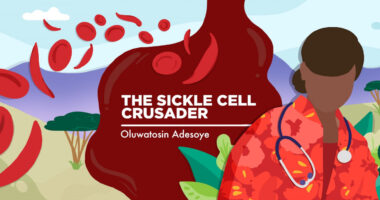Risk of pregnancy-related death 26 times higher among US patients
Researchers call unfavorable SCD outcomes a result of 'disadvantage'

The risk of pregnancy-related death is about 26 times higher among people with sickle cell disease (SCD) in the U.S. compared with the national average, a recent study reported.
The rate of pregnancy-related complications among SCD patients has not improved in recent decades, the results indicate.
“People with sickle cell disease are already lacking profoundly needed research and clinical care. Pregnant people with sickle cell disease are at an even greater disadvantage,” said Lydia Pecker, MD, an assistant professor of medicine at the Johns Hopkins University School of Medicine and co-author of the study, in a press release.
Much of that increased risk for SCD patients, who are predominantly Black, is attributable to healthcare disparities based on race, the results indicate.
The study, “Severe Maternal Morbidity and Mortality in Sickle Cell Disease in the National Inpatient Sample, 2012-2018,” was published in JAMA Network Open.
Pregnancy is intensely demanding and people with underlying health conditions like SCD are often at an increased risk of complications as a result
“Pregnancy can bring out negative side effects of any preexisting condition, and sickle cell disease is no exception,” said Ahizechukwu Eke, PhD, associate professor of gynecology and obstetrics at the Johns Hopkins University School of Medicine, and the study’s co-author. “Sickle cell patients require more interventions, including increased blood transfusions and more frequent ultrasounds to assess the condition of the fetus.”
Complications from pregnancy are also disproportionately common among Black people in the U.S. general population.
While historical data has suggested that people with SCD are at an increased risk of pregnancy-related complications, the recent risk is less clear, leading the researchers to study data from 5,401,899 deliveries from a U.S. database called the National Inpatient Sample (NIS). These included 3,901 deliveries from people with SCD and 742,164 from Black people in general. Most SCD deliveries (84%) were from Black people, as anticipated.
Lack of research, specialty care for SCD patients
Compared with non-Black patients in the general population, both Black and SCD patients were generally younger at the delivery, more likely to be on public insurance, and to live in a low-income area.
The rate of maternal mortality — death during pregnancy, at, or just after delivery — was 0.5 out of every 10,000 deliveries in the general population for non-Black people. For Black patients, the maternal mortality rate was more than twice as high, at 1.2 per 10,000 deliveries.
The maternal mortality rate for SCD patients was 13.3 per 10,000 deliveries, more than 10 times higher than in the general Black population and 26 times higher than in the non-Black population.
“Our work demonstrates that people with sickle cell disease face risk over and above other pregnant people with Black race,” said Macy Early, a medical student at Johns Hopkins and the study’s first author. “Among the risks that are specific to people [with] sickle cell disease are a highly morbid preexisting condition, a lack of treatment options, in part due to the insufficient research focused on pregnant people with sickle cell disease, and to the absence of high-quality specialty care in many regions of the country.”
SCD patients were also at a significantly higher risk of pregnancy-related complications like eclampsia, a disorder marked by high blood pressure and seizures, further analyses showed. Clotting problems and disorders involving blood flow in the brain (e.g., stroke) were especially common among pregnant people with SCD.
The risk of fetal death did not differ significantly between SCD patients and Black patients in the general population. In both groups, the risk of fetal death was roughly two times higher than in the non-Black general population, however.
‘Urgent need’ to improve SCD outcomes
These outcomes are comparable, or even slightly worse, than data gathered from the late 1990s and 2000s.
“Maternal mortality in SCD is not improving,” the researchers wrote, noting these results highlight an urgent need for efforts to better care for people with SCD who choose to become pregnant. “The failure to improve outcomes in pregnant people with SCD, despite long recognized risk, reflects profound deficiencies in SCD clinical and research structures.”
To better understand how race affects outcomes in SCD, researchers assessed how much of the variation in SCD outcomes could be attributable to race-related discrepancies. Results indicated that race accounted for nearly a third (28.9%) of the increase in pregnancy risk for people with SCD. This implies that efforts to reduce race-based healthcare disparities could meaningfully improve pregnancy outcomes for people with SCD.
“Our analysis suggests that approximately 50% of the increased risk of acute kidney failure, intrauterine fetal demise, and eclampsia among deliveries to people with SCD could be eliminated by addressing racial disparities in maternal health,” the researchers wrote. “Recognition of racial disparities in pregnancy outcomes compels efforts to improve access to comprehensive medical care, transportation, housing, and support services, which could meaningfully improve outcomes in SCD pregnancies.”






